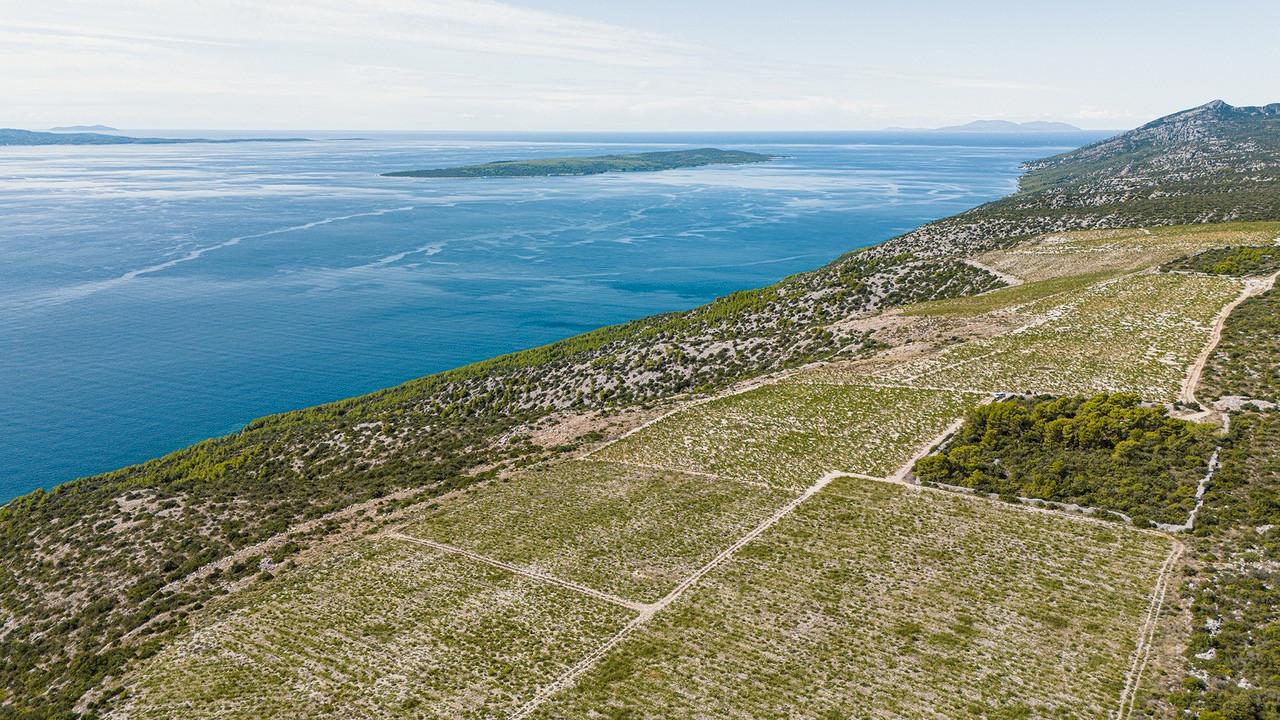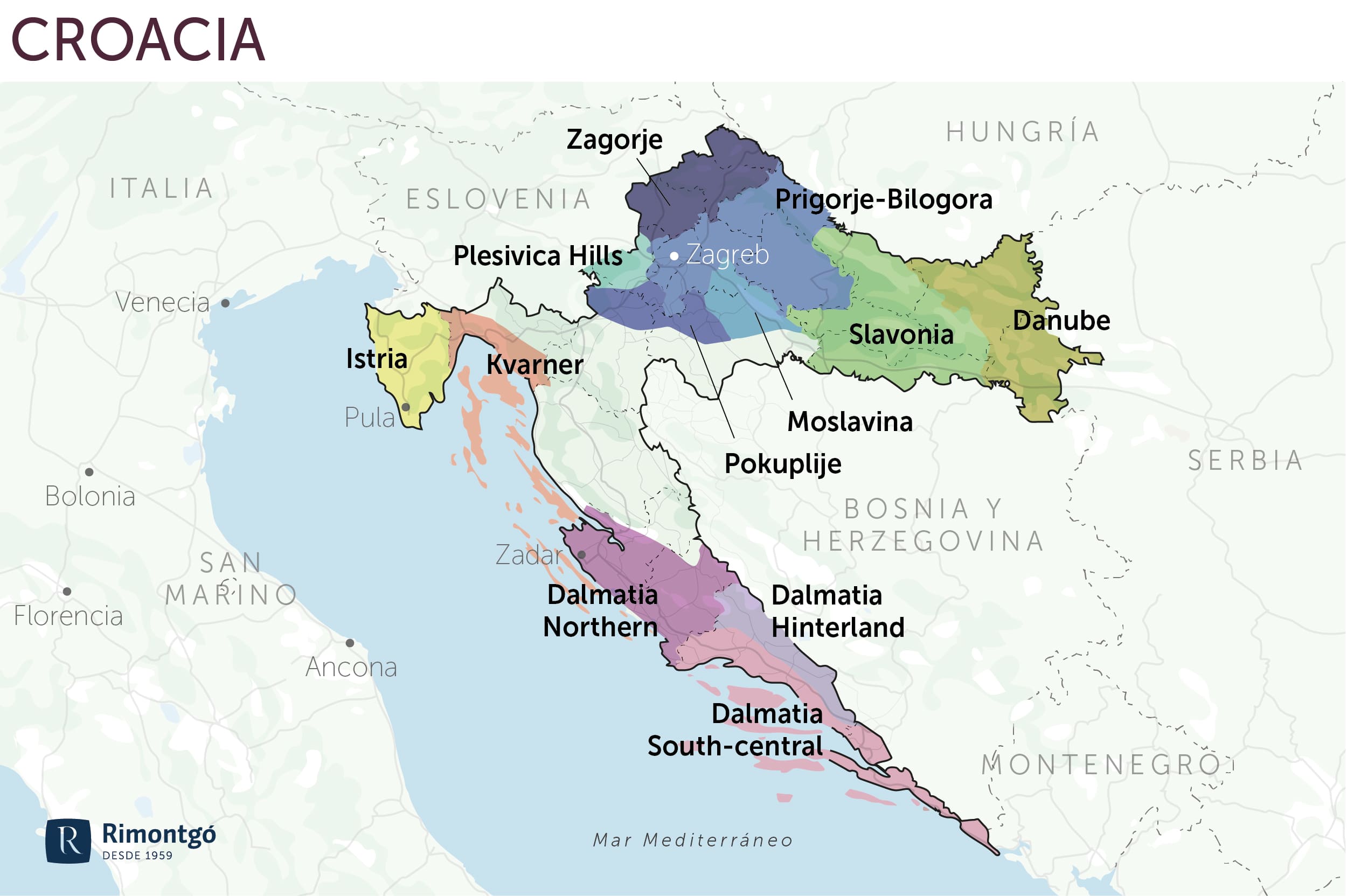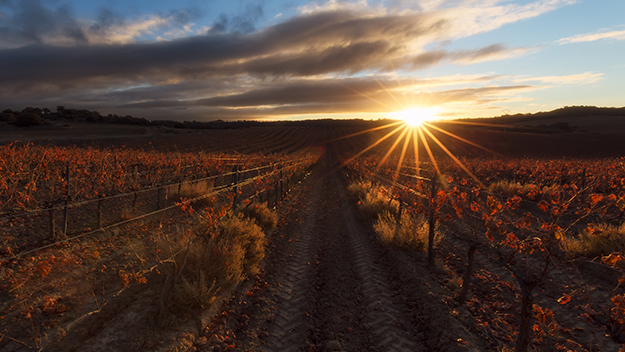Find your winery or vineyard
1 Wineries and Vineyards for sale in DOCs Croatia

210 hectares on the most famous island in the Adriatic Sea, 40 hectares planted with vineyards and a project to plant olive trees.
Dalmatia
Infographic of the Denomination of Origin

Change to imperial units (ft2, ac, °F)Change to international units (m2, h, °C)
DOCs Croatia
Croatian wines are classified by quality, which is clearly marked on the label.
· Vrhunsko Vino: Premium Quality Wine
· Kvalitetno Vino: Quality Wine
· Stolno Vino: Table Wine
In addition, wines may qualify for a geographical origin stamp, if it is produced from grapes grown in the same winegrowing region.
Despite these various classifications systems, Croatian wines don't have a DO or AOC system like Spain, Italy, or France, which can make it confusing to understand a wine's grade or origin.
Croatia has three main wine regions: Eastern Continental (Istočna kontinentalna), Western Continental (Zapadna kontinentalna) and Coastal (Primorska), which also includes the islands. Each of the main regions is divided into sub-regions, which are divided yet further into smaller vinogorje (literally wine hills). Altogether, there are more than 300 geographically defined wine-producing areas in Croatia. More than half of the wine production is concentrated in three counties: Istria, Osijek-Baranja, Vukovar-Srijem.
Eastern continental Croatia
Vineyard in Zmajevacllok
The eastern inland wine region includes Slavonia and the Croatian Danube. It is a relatively flat area bordered by three rivers: the Danube, Drava and Sava. The production is concentrated in white wine varieties. The best-known area within this region is Slavonia; the most widely planted grape is Grasevina.
The continental region is divided into the following sub-regions:
Podunavlje: Baranja, Erdut, Srijem
Slavonia: Daruvar, Đakovo, Feričanci, Kutjevo, Nova Gradiška, Orahovica-Slatina, Pakrac, Požega-Pleternica, Slavonski Brod, Virovitica
Western continental Croatia
Vineyard in Hrvatsko Zagroje.
The western inland wine region includes the Croatian uplands. Production is concentrated in white wine varieties.
The continental region is divided into the following sub-regions:
Moslavina: Kutina, Čazma, Voloder-Ivanić Grad
Plešivica: Krašić, Ozalj-Vivodina, Plešivica-Okić, Samobor, Sveta Jana
Pokuplje: Karlovac, Petrinja, Vukomeričke Gorice
Prigorje-Bilogorje: Bilogora, Dugo Selo-Vrbovec, Kalnik, Koprivnica-Đurđevac, Zagreb, Sv. Ivan Zelina
Zagorje-Međimurje: Klanjec, Krapina, Ludbreg, Međimurje, Pregrada, Stubica, Varaždin, Zabok, Zlatar, Zaprešić
Coastal Croatia
Vineyard in the Makarska region on the slopes of Biokovo Vineyards in Istria, Croatia Plavac wine from the Dalmatian region of Croatia.
Officially, the coastal wine region runs from Istria in the north to Dalmatia to the south. However, due to the widely differing growing conditions, the grape varieties, and the resulting wines, the coastal region is often divided into two parts: Istria/Kvarner and Dalmatia.
Istria and Kvarner are where the warmth of the Mediterranean meets the cold from the Alps, making for a cooler climate than the southern part of the coastal region. In Istria and the north coast, there is a wide range of grape varieties, but mostly Malvazija and Teran.
Istria has a rich history of viticulture and is one of the oldest wine regions in Europe. An extremely long coastline with a range of microclimates across the region, allowing for the growth of a range of grape varietals and the production of a diverse catalog of wines. Currently, there is 4000 ha under the vine in Istria. At the end of the 19th century, the area under vine was 44 000 ha but this decreased dramatically after phylloxera struck the region.
Further south, in Dalmatia, with its rocky landscapes, the islands and hillsides have an infinite variety of microclimates. A wide range of indigenous grape varietals are grown here, the best known being Plavac Mali, the child of Zinfandel and Dobricic.
The coastal region is divided into the following sub-regions (listed north to south):
Istria (Istra): Western Istria (Zapadna Istra), Central Istria (Centralna Istra), Eastern Istria (Istočna Istra)
Croatian Coast or Kvarner: Opatija-Rijeka-Vinodol, islands Krk, Rab, Cres-Lošinj, Pag
Northern Dalmatia (Sjeverna Dalmacija): Pirovac-Skradin, Primošten, Šibenik, Zadar-Biograd
Dalmatian Interior (Dalmatinska Zagora): Benkovac-Stankovci, Skradin, Knin, Promina, Drniš, Imotski, Sinj-Vrlika, Kaštelanska zagora, Vrgorac
Central and South Dalmatia (Srednja i Južna Dalmacija) Kaštela-Trogir, Split-Omiš-Makarska, Neretva, Komarna, Konavle, Pelješac peninsula, islands Brač, Hvar, Korčula, Lastovo, Mljet, Šolta, Vis
Discover more wineries and vineyards for sale in these wine regions in Islands
Subscribe to our mailing list to receive news about wineries and vineyards.






